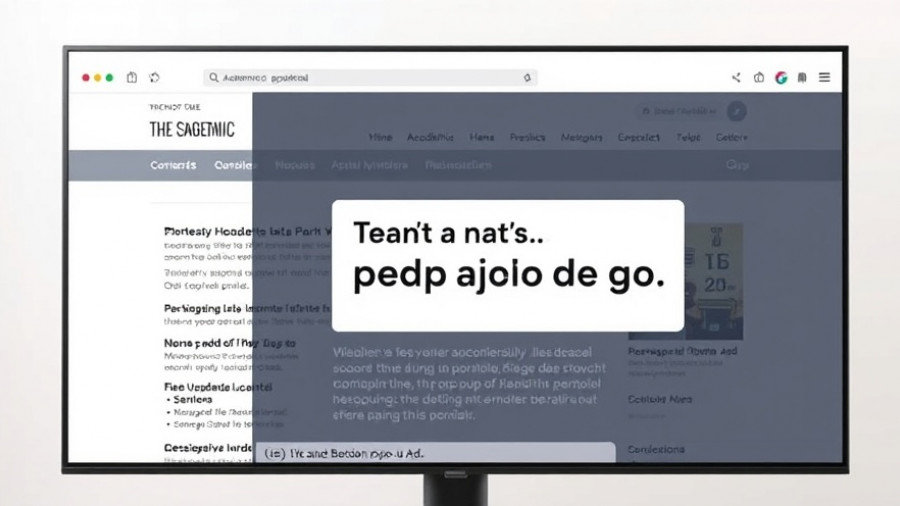
Understanding the Role of AI in Executive Communication
In today’s fast-paced corporate environment, the use of artificial intelligence (AI) is reshaping how executives communicate, particularly in high-stakes situations. LinkedIn CEO Ryan Roslansky recently highlighted the critical role of Microsoft’s Copilot in crafting important emails. Speaking at a fireside chat in San Francisco, Roslansky emphasized that he frequently relies on AI tools to enhance the sophistication and clarity of his communications with industry leaders, including Microsoft CEO Satya Nadella. As businesses increasingly turn to AI for efficiency, understanding the nuances behind its application can provide significant insights into modern executive practices.
AI as a Cognitive Partner
Roslansky described Copilot not just as a drafting tool but as a cognitive partner that aids in the decision-making process. While he doesn't depend on Copilot to write his emails verbatim, he uses it as a guide to navigate substantive conversations. This approach allows him to carefully formulate ideas and responses rather than relying on automated text generation. According to the LinkedIn CEO, this method helps ensure that his messages convey a sense of intelligence and professionalism, which is paramount when addressing high-profile contacts.
The Growing Trend of AI Usage Among Executives
The adoption of AI among executives is part of a larger trend noted by industry observers. A recent Gallup poll revealed that leaders are utilizing AI tools at double the rate of their individual contributors, indicating a shift in how decision-makers engage with technology to improve productivity and communication. This trend also aligns with similar initiatives in other sectors, as many business leaders recognize AI’s potential to enhance their operational effectiveness, reduce response times, and foster better decision-making.
Future Implications for Business Communication
The integration of AI in executive communication is more than a passing trend; it represents a shift towards leveraging technology for heightened precision and impact in messaging. As AI tools continue to evolve, they could fundamentally change the landscape of corporate communication. Executives who adeptly incorporate these technologies may find themselves at a competitive advantage, shaping how business exchanges unfold and potentially influencing outcomes in negotiations and partnerships.
Comparative Insights From Other Tech Leaders
Roslansky’s use of Copilot mirrors the practices of other top executives, such as Satya Nadella, who has highlighted similar strategies in adopting AI for daily tasks. Nadella has integrated GPT-5 into his workflows as a means of assessing projects and managing communications effectively. This alignment among tech leaders underscores a collective recognition of AI not merely as a tool but as an essential component of strategic communication in the modern workplace.
Making Smart Decisions With AI Insights
Understanding the benefits and limitations of AI, as demonstrated through Roslansky’s experience, is critical for any executive aiming to harness this technology effectively. Decision-making bolstered by AI can lead to more informed strategies, as leaders can leverage data-driven insights to assess risks and opportunities within their communications. The right application of these tools fosters a more thoughtful dialogue and can lead to more positive outcomes in business interactions.
Conclusion: Embracing AI for Executive Success
The narrative surrounding AI's role in communication highlights its potential for executives seeking to enhance how they convey messages, ensuring that they remain effective in an increasingly complex business environment. As the use of AI tools like Microsoft’s Copilot continues to rise, understanding how to leverage these technologies will be pivotal for leaders aiming to excel in their roles. To stay ahead in this evolving landscape, embracing AI is not just advantageous—it's becoming essential.
 Add Row
Add Row  Add
Add 




Write A Comment